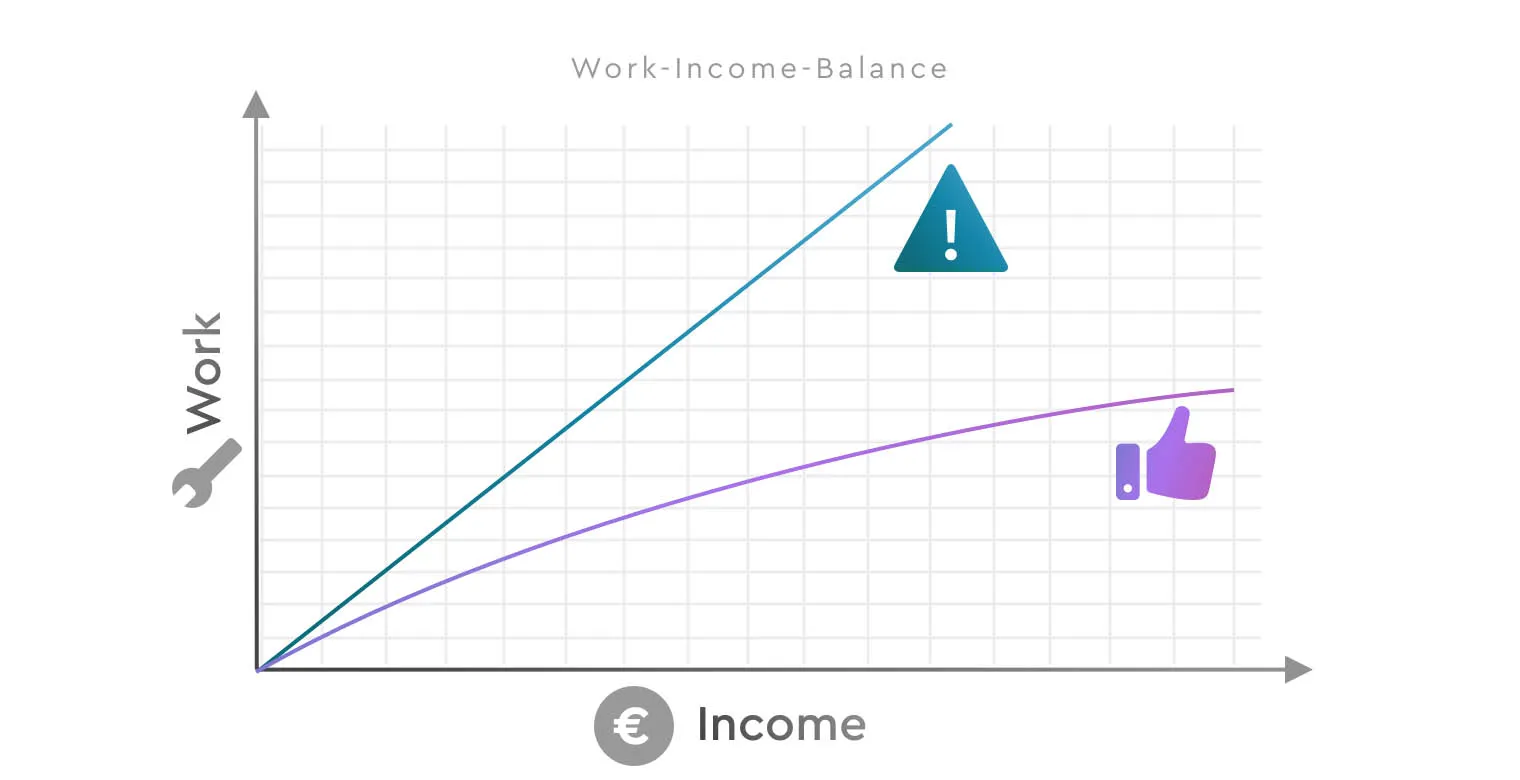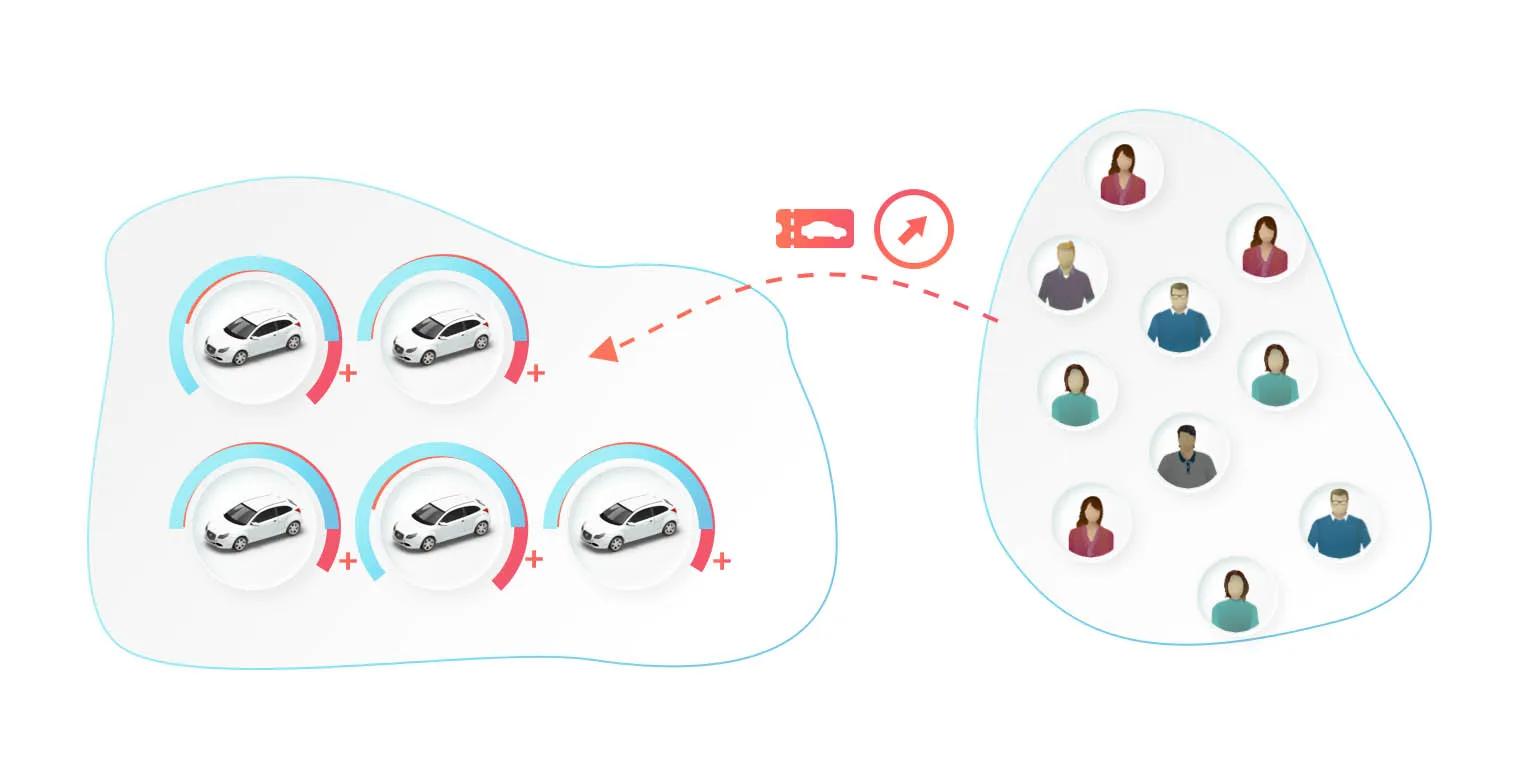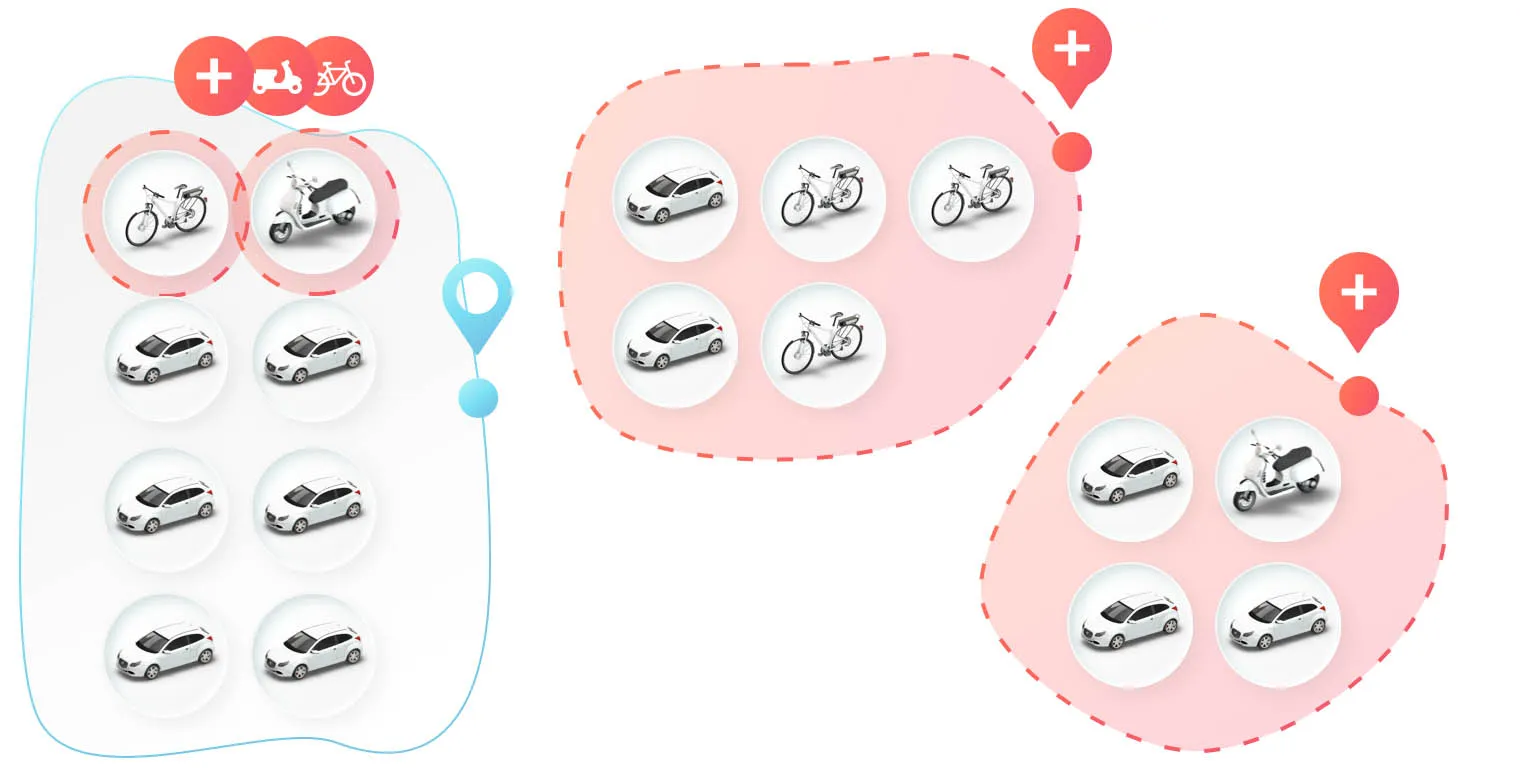
7 min read • April 12, 2022
Successful scaling means growth without a proportional increase in the resources used. For providers, this is a desirable model for increasing company profits and the number of users. It is up to you whether you increase the utilization of existing vehicles, enlarge your fleet or expand into new business models or markets. In any case, in addition to the right software solution, you also need internal structures and processes that allow and promote scaling.
Education
The article outlines how scaling in shared mobility means growing your user base or fleet without proportionally increasing resource usage—thereby boosting profit margins—and emphasizes two main strategies: vertical scaling, by improving the utilization of existing vehicles through better marketing, customer communication, and process automation; and horizontal scaling, by expanding the fleet or entering new markets and business models in a stepwise, controlled manner. Critical prerequisites for successful scaling include deep market and target-group knowledge, reliable and scalable software support, streamlined internal processes, and having a dedicated project manager or team to oversee the growth.
The appeal of a scalable offering is obvious: higher revenues without equally rising fixed costs or investments lead to a larger profit margin. The additional costs caused by scaling must be lower than the increased revenues for growth to be economically worthwhile.
A good example for a scalable business model are streaming services like Netflix or Spotify. New users lead to higher revenues, but do not cause any significant costs. In shared mobility, scaling, if it involves an expansion of the fleet, certainly leads to costs for acquisition or leasing and vehicle insurance. However, these costs can be specifically allocated to individual vehicles and do not directly increase the general fixed costs.
Also, the time factor should not increase proportionally. In other words, internal administrative costs should not increase significantly as a result of the enlarged fleet. Rather, the costs should be degressive in relation to the fleet size so that scaling pays off financially. This means that the additional costs decrease with each scaling step. If you can ensure this, scaling allows you to respond to changing market conditions or competitive situations. You strengthen your own competitive situation and are able to serve more customers through higher vehicle availability. This not only increases user satisfaction, but can also convince current skeptics to give shared mobility a chance in the future. In addition, a scalable offering enables you to expand into new markets or business models - be it out of a strategic decision or an existing, still unserved demand.

You have different options to scale your sharing offer. A basic distinction can be made between vertical and horizontal scaling. Vertical scaling means that you increase the number of bookings of your existing vehicles. Horizontal means that you expand your offering by adding new vehicles, business models or markets.
The focus is on the following three paths:
Not every path to scale is relevant for every provider. Depending on the status quo, your next step may be to increase fleet size quantitatively first. Or, you may be ready to expand into additional cities or additional vehicle types.
Below, we present each option one by one. You decide which one you want to focus on in the next step.

In this vertical scaling, you pursue the goal of generating more bookings with your existing fleet in your current market and thus increasing revenue and profit.
This option can be useful if the utilization of your fleet is not maximized, but the vehicles are parked unbooked for part of the day. Your offering may have deficits in its appeal to your target group, or your marketing efforts may not be reaching the right people. Finding out which factors are responsible for low utilization will help you find the right tools as part of vertical scaling.
Analyze the current demand situation in your market and the needs of your target group. Customer satisfaction surveys, feedback received on various channels, and reviews of your app in the app stores can provide you with valuable information.
Based on the findings, you can plan measures for further market penetration, for example:
Reaching more customer segments with a subscription model →
In addition, you can achieve scaling via optimized utilization even if operational processes take up a lot of time at the present time and require manual work that leaves vehicles unavailable more often and for longer than necessary.
By constantly optimizing or even (partially) automating processes such as damage management, maintenance and repair, you can keep vehicle downtimes lower and achieve higher availability. Operational Excellence is an important keyword here.
Learn more about Operational Excellence for Sharing Providers →
Keep an eye on the entire life cycle of your vehicles and try to extend it through regular maintenance, timely repairs and fines for damage caused by drivers. This way, your fleet remains roadworthy and you save costs for new acquisitions.

Should you rather be in a situation where demand is higher than the availability of your vehicles, scaling instead means increasing the existing fleet. In this case of horizontal scaling, more vehicles lead to more potential bookings and thus to higher revenues and a higher profit.
Before investing in expanding your fleet, check that the utilization of existing vehicles is not blocked by inefficient internal processes and that there is actually higher demand for your offering. As explained at the beginning of this article, acquisition or leasing and insurance costs must be disproportionate to new revenues for scaling to be profitable.
However, if the demand is there and your own operations are stable, scaling the fleet is a good opportunity to improve your revenue. For the general administration and the sharing software, it makes no significant difference whether you offer 10 or 50 vehicles for sharing.
Don't go from 20 to 200 vehicles right away, but perhaps first from 20 to 50, from 50 to 100, from 100 to 150... As long as you stay in your usual market and established business model, the complexity of scaling remains manageable. Nevertheless, you should be able to ensure that your team stays on top of things and keeps up with operational tasks at all times. Incremental scaling also gives you more opportunity to readjust plans if you misjudged the demand.

Another option for horizontal scaling is expansion into new markets - either geographically or in terms of business models. Geographic expansion means extending the offering to additional cities, regions or even countries. In terms of the business model, expansion can be, on the one hand, an expansion of the vehicle types offered and, on the other hand, an expansion to include station-based or free-floating offerings.
The complexity of your scaling is highest with this option. In return, additional use cases, user groups, and locations come with a high expectation of additional revenue and profit.
Before you start expanding your offering, use a comprehensive market analysis to ensure that there is corresponding demand. Your existing processes should also be lean and optimized so that they can be transferred as smoothly as possible to an additional product or a new location.
This option also places greater demands on the software to map the additional locations or expanded business model in the desired manner. With MOQO, when you upgrade to a larger partner package, you get additional features and more services that can help you scale.
Do not start in three new locations at the same time, but in one after the other. That way, by the time the second expansion comes around, you'll already know what went well in the first and what didn't. Give yourself the chance to learn from possible mistakes. Since expanding into new markets is a complex undertaking, your team needs to be ready for the effort. It is highly advisable to have a project manager for the expansion or, depending on the expansion project, a project team.

Making more money is probably what every provider wants. But for this to happen by scaling, you need to make thoughtful and informed decisions. We've already touched on some of the success factors for your scaling in the previous sections.
A good knowledge of the market and target groups helps you to assess demand and the actual need for your offering. Analysis results are signposts in the strategic decision for the appropriate scaling option.
A fundamental prerequisite for the scalability of your offering is also the right software and partner package for your shared mobility project. Check whether the current functions as well as the technical stability can also cover higher data volumes and more complex offer structures. But also be aware that a larger fleet or additional locations are usually less problematic for intelligent software than for the effectiveness of your internal processes.
So to ensure smooth internal processes, you should look at Operational Excellence. Streamline processes as much as possible and strive for maximum efficiency in operations and automation. This way, you'll avoid scaling losses. After all, you only want to increase your revenue and not avoidable expenses.
In addition, you should appoint a project manager for the scaling, if necessary. Their task is to think through the scaling in all its aspects and to plan and prepare it in detail. In the case of greater complexity, a project team may be useful.
In summary, the success factors for successfully scaling your offering are as follows:

How complex and extensive your scaling becomes is up to you: expenses, risks, but also the prospect of higher revenues increase with the number of vehicles as well as with the expansion into new markets.
To give an example, you can easily scale up to 20 vehicles without major adjustments to your team structure and software package. To expand to 100 vehicles, you need more efficient processes, but are still operating at a rather low level of complexity.
Scaling beyond that usually creates a need for expanded software capabilities or internal restructuring. This is particularly the case if you not only want to increase your fleet, but also expand into other markets. In any case, the above figures are intended as a point of orientation and may differ, especially in the case of complex scaling strategies.

Our guide will help you stay on top of things as you build your sharing offering. Learn what matters and what you should think about.